Komentáře / Otázky (62)
![]() Catherine napsala:
Catherine napsala:
Bonjour est il normale au début du shema 2 je n' ai plus que lamoitie des mailles sur les 310 du debut
17.02.2025 - 18:51Odpověď DROPS Design :
Bonjour Catherine, le nombre de mailles dans A.2 varie en fonction du rang (et de la taille), vous pouvez placer un marqueur entre chaque diagramme pour pouvoir ainsi bien vérifier ainsi que votre nombre de mailles après chaque rang correspond à celui du diagramme. Bon tricot!
18.02.2025 - 10:11
![]() Odile napsala:
Odile napsala:
Bonjour , j’ai du mal à comprendre les augmentations au 3 ème rang de A2 symbolisée par l’étoile . N’y a t’il pas une vidéo explicative ? Je ne trouve pas. .erci
01.06.2024 - 12:28Odpověď DROPS Design :
Bonjour Odile, suivez attentivement le diagramme et regardez cette vidéo (pour le top), cela devrait pouvoir vous aider à visualiser comment faire. Bon tricot!
03.06.2024 - 07:23
![]() Concetta La Scala napsala:
Concetta La Scala napsala:
Io ho un campione di 24 maglie ,volevo chiedere se posso lavorarlo lo stesso dato che il vostro campione è di 23 maglie.Grazie
27.05.2024 - 20:58Odpověď DROPS Design :
Buonasera Concetta, provi a cambiare il numero di ferri per raggiungere il campione indicato. Buon lavoro!
28.05.2024 - 18:12
![]() Odile napsala:
Odile napsala:
Bonjour Pour le col , après les jetés sur A1 ,je constate que cela forme des trois au rang suivant , j’ai pourtant tricoté les mailles torses, comment améliorer cette tech nique ? Merci
14.05.2024 - 09:20Odpověď DROPS Design :
Bonjour Odile, veillez à ne pas faire vos jetés trop lâches et tricotez-les bien torse pour éviter les trous au tour suivant; si vous avez toujours des trous qui vous dérangent, vous pouvez utiliser une autre technique pour augmenter, à votre convenance. Bon tricot!
14.05.2024 - 12:17
![]() Kirsten Grønby napsala:
Kirsten Grønby napsala:
Jeg kan ikke finde ud af hvilken størrelse jeg skal strikke. Jeg kan ikke finde brystmål på de forskellige størrelser. Det plejer I at have på opskrifterne. Hvor finder jeg dem?
12.03.2024 - 16:24Odpověď DROPS Design :
Hei Kirsten. Jo, alle mål finner du på målskissen nederst på oppskriften. mvh DROPS Design
18.03.2024 - 13:52
![]() Lilia napsala:
Lilia napsala:
Hallo, ich habe eine Frage, ich weiß nicht was ich falsch mache. Ich habe für die Größe S -108 Maschen mit 2,5 Stricknadel angeschlagen und zu einer Runde geschlossen, aber der Ausschnitt ist so eng. Es sieht niemals so aus wie auf dem Bild. Meine Maschen Probe stimmt. Was mache ich falsch?
25.02.2024 - 16:17Odpověď DROPS Design :
Liebe Lilia, beachten Sie, daß die Anschlagskante nicht zu eng wird, gerne können Sie dann mit grösseren Nadeln oder mit 2 Fäden anschlagen, dann sollte der Hals breit genug sein. Viel Spaß beim stricken!
26.02.2024 - 09:31
![]() Desislava Abadzhieva napsala:
Desislava Abadzhieva napsala:
Hello how to start with sleeve . May i have a video .
11.12.2023 - 17:54Odpověď DROPS Design :
Sure, in this video, from time code approx. 9:37 we show how to put stitches back on needle and work sleeve; you can find the same technique in this lesson from picture 18. Happy knitting!
12.12.2023 - 08:48
![]() Anna napsala:
Anna napsala:
Czy po każdym rzędzie znaków należy przerobic kolejny rząd prawych oczek, (jak lewych jakbym robiła nna lewej stronie), czy robię kolejne rzędy schematu jeden bezpośrednio po drugim?
18.08.2023 - 10:35Odpověď DROPS Design :
Witam, schematy pokazują wszystkie rzędy, widok na prawej stronie robótki. Początek schematu jest w prawym dolnym rogu i dalej czytamy schemat do góry. Jak odczytywać schematy znajdziesz w kursie DROPS TUTAJ. Miłego dziergania!
18.08.2023 - 10:58
![]() Laurence Roquet napsala:
Laurence Roquet napsala:
Bonjour, comment faire une rehausse pour le dos sur ce modèle dont le yoke commence très tot ? merci
23.06.2023 - 21:12Odpověď DROPS Design :
Bonjour Mme Roquet, vous pouvez tenter de les rajouter dans la partie côtes de A.1, avant de commencer les augmentations. Bon tricot!
26.06.2023 - 09:09
![]() Anne Andersen napsala:
Anne Andersen napsala:
Er diagrammet for str XL rettet , jeg får 11 retmasker mellem vrangmaskerne og det kan jeg ikke få til st passe
20.02.2023 - 12:43
Alberta Rose#albertarosesweater |
||||||||||||||||||||||||||||
 |
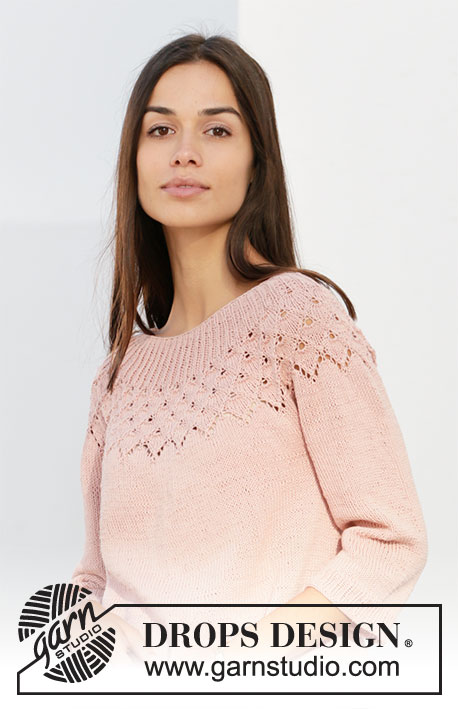 |
|||||||||||||||||||||||||||
Pulovr s kruhovým sedlem s ažurovým lístkovým vzorem a ¾ rukávem pletený shora dolů z příze DROPS Safran. Velikost S - XXXL.
DROPS 212-5 |
||||||||||||||||||||||||||||
|
------------------------------------------------------- VYSVĚTLIVKY: ------------------------------------------------------- VZOR: Viz schémata A.1 a A.2. Zvolte si schéma pro požadovanou velikost. TIP – PŘIDÁVÁNÍ 1 (boky trupu): Pleteme až po poslední 2 oka před značkou: 1x nahodíme, 4 oka upleteme hladce (značka leží uprostřed těchto 4 ok), 1x nahodíme. V následující kruhové řadě pleteme nahození za zadní nit, aby se v pletenině netvořily dírky. Nová oka pak pleteme lícovým žerzejem. TIP – PŘIDÁVÁNÍ 2: Abychom vypočítali, v jakých rozestupech máme přidávat, vydělíme celkový počet ok na jehlici (např. 244 ok) počtem ok, která potřebujeme přidat (tj. 62), takže 244 : 62 = 3,93. V tomto případě tedy 1x nahodíme za každým zhruba 4. okem. V následující kruhové řadě pleteme nahození za zadní nit, aby se v pletenině netvořily dírky. TIP - UJÍMÁNÍ (rukávy): Ujímáme 1 oko na každé straně značky, takto – začínáme 3 oka před značkou: 2 oka spleteme hladce, 2 oka upleteme hladce (značka leží mezi nimi), 1 oko sejmeme hladce, 1 upleteme hladce a sejmuté přes ně přetáhneme. TIP - UZAVÍRÁNÍ: Abychom neměli uzavřený okraj moc stažený, můžeme na uzavírání ok použít silnější jehlici. Pokud ani to nestačí, pak 1x nahodíme za každým zhruba 4. okem – toto nahození hned uzavřeme jako běžné oko. ------------------------------------------------------- POPIS PRÁCE: ------------------------------------------------------- PULOVR - JAK BUDEME POSTUPOVAT: Lem průkrčníku a sedlo pleteme v kruhových řadách na kruhové jehlici, shora dolů od středu zadní strany. Pak sedlo rozdělíme na trup a rukávy. Rukávy upleteme v kruhových řadách na ponožkových jehlicích. LEM PRŮKRČNÍKU: Na kruhovou jehlici č.2,5 nahodíme přízí Safran 108-116-124-124-128-140 ok a upleteme 1 kruhovou řadu hladce. Pak pleteme v kruhových řadách vzor A.1 (= 4 oka; = 27-29-31-31-32-35 sekvencí vzoru). Po upletení prvních 6 kruhových řad vzoru převedeme pleteninu na kruhovou jehlici č.3,5. Označíme si začátek kruhové řady = střed zadní strany průkrčníku; SEDLO NYNÍ MĚŘÍME OD TOHOTO MÍSTA! SEDLO: Po dokončení 1 celé sekvence vzoru A.1 (na výšku) máme na jehlici 216-232-248-310-320-350 ok. Díl měří asi 5-5-5-6-6-6 cm (od značky). Pleteme v kruhových řadách vzor A.2 (= 8-8-8-10-10-10 ok; = 27-29-31-31-32-35 sekvencí vzoru). Po dokončení 1 celé sekvence vzoru A.2 (na výšku) máme na jehlici 324-348-372-434-448-490 ok. Díl teď měří asi 16-16-16-21-21-21 cm (od značky). Pokračujeme lícovým žerzejem až do výše 18-20-21-23-25-27 cm (od značky). Nyní rozdělíme díl na trup a rukávy. Postupujeme takto: Upleteme 46-50-53-62-65-73 (= polovina zadního dílu), následujících 70-74-80-93-94-98 ok odložíme na pomocnou jehlici (= rukáv), nahodíme 8-8-10-8-12-10 nových ok (= podpaží), upleteme 92-100-106-124-130-148 ok (= přední díl), dalších 70-74-80-93-94-98 ok odložíme na pomocnou jehlici (= rukáv), nahodíme 8-8-10-8-12-10 nových ok (= podpaží) a dopleteme posledních 46-50-53-62-65-73 ok (= polovina zadního dílu). TRUP: = 200-216-232-264-284-314 ok. Doprostřed 8-8-10-8-12-10 nových ok v podpaží na každé straně vložíme značku (= boky trupu). Mezi značkami leží 100-108-116-132-142-156 ok zadního dílu a 100-108-116-132-142-158 ok předního dílu. Značky během pletení snímáme vždy do aktuálně pletené kruhové řady - využijeme je později při přidávání na bocích. Pleteme v kruhových řadách lícovým žerzejem. Ve výši 3 cm od podpaží přidáme na obou stranách obou značek 1 oko – viz TIP – PŘIDÁVÁNÍ 1 (= přidáme 4 oka). Toto přidávání opakujeme vždy po 2,5 cm výšky, celkem 7x = 228-244-260-292-312-342 ok. Pokračujeme až do výše 26-26-27-27-27-27 cm od podpaží. Upleteme 1 kruhovou řadu hladce a SOUČASNĚ přidáme rovnoměrně 60-62-64-65-66-66 ok – viz TIP – PŘIDÁVÁNÍ 2 = 288-306-324-357-378-408 ok. Pleteninu převedeme na kruhovou jehlici č.2,5 a pleteme pružným vzorem 1/2 (tj. střídáme 1 oko hladce, 2 obrace). Když je pružný lem vysoký 4 cm, všechna oka hladce uzavřeme – viz TIP – UZAVÍRÁNÍ. RUKÁV: Odložených 70-74-80-93-94-98 ok jednoho rukávu vrátíme z pomocné jehlice zpět na ponožkové jehlice č.3,5 a navíc k nim nabereme po 1 oku z každého z 8-8-10-8-12-10 nově nahozených ok v podpaží = 78-82-90-101-106-108 ok. Doprostřed 8-8-10-8-12-10 nových ok v podpaží vložíme značku. Značku snímáme vždy do aktuálně pletené kruhové řady; využijeme ji při ujímání. Pleteme v kruhových řadách lícovým žerzejem. Ve výši 2 cm od podpaží ujmeme na každé straně značky 1 oko – viz TIP – UJÍMÁNÍ (= ujmeme 2 oka). Toto ujímání opakujeme vždy po 2,5-2-1,5-1-1-1 cm výšky, celkem 9-10-13-17-18-18x = 60-62-64-67-70-72 ok. Ve výši 30-28-28-26-25-23 cm od podpaží přidáme rovnoměrně 6-7-8-5-8-6 ok = 66-69-72-72-78-78 ok. Pleteninu převedeme na ponožkové jehlice č.2,5 a pleteme lem pružným vzorem 1/2 (tj. střídáme 1 oko hladce, 2 obrace). Když je rukáv dlouhý asi 34-32-32-30-29-27 cm (od podpaží), všechna oka volně uzavřeme. Stejným způsobem upleteme i druhý rukáv. |
||||||||||||||||||||||||||||
Vysvětlivky ke schématu |
||||||||||||||||||||||||||||
|
||||||||||||||||||||||||||||
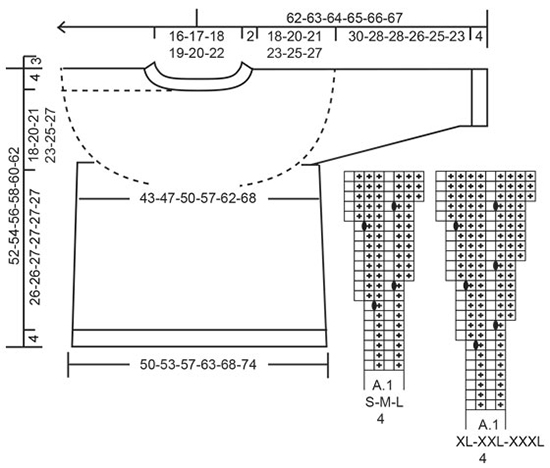
|
||||||||||||||||||||||||||||
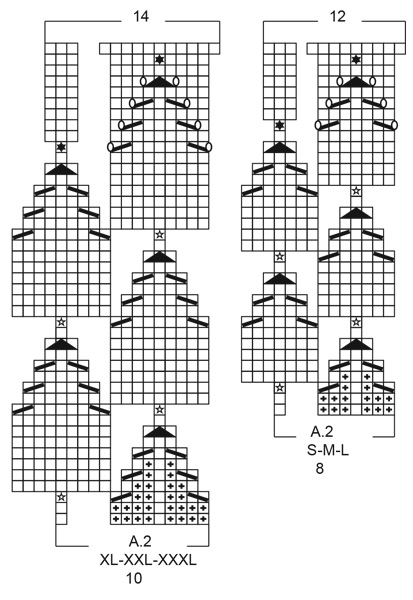
|
||||||||||||||||||||||||||||
Dokončili jste tento model?Pak označte své fotky tagem #dropspattern #albertarosesweater nebo je pošlete do galerie #dropsfan. Potřebujete s tímto návodem poradit?Otevřete-li si návod na stránce garnstudio.com, najdete tam 23 výukových video-ukázek, Komentáře/Dotazy a další užitečné informace. © 1982-2025 DROPS Design A/S. Vyhrazujeme si veškerá práva. Tento dokument, včetně všech jeho dílčích částí, podléhá autorským právům. Podrobnější komentář k možnostem užití našich návodů najdete dole pod každým návodem na našich stránkách. |
||||||||||||||||||||||||||||







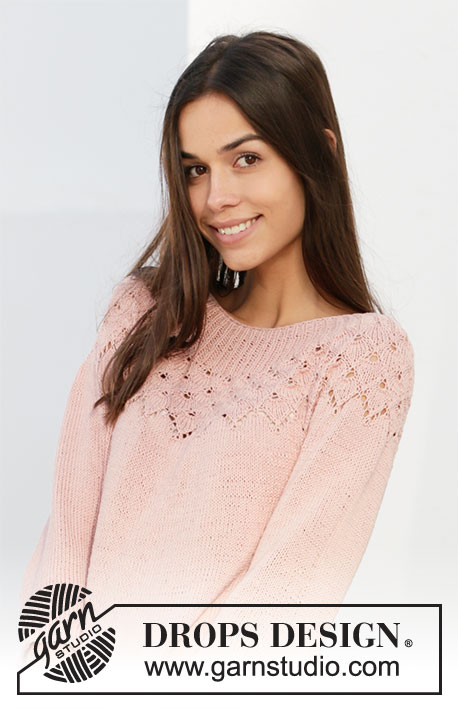
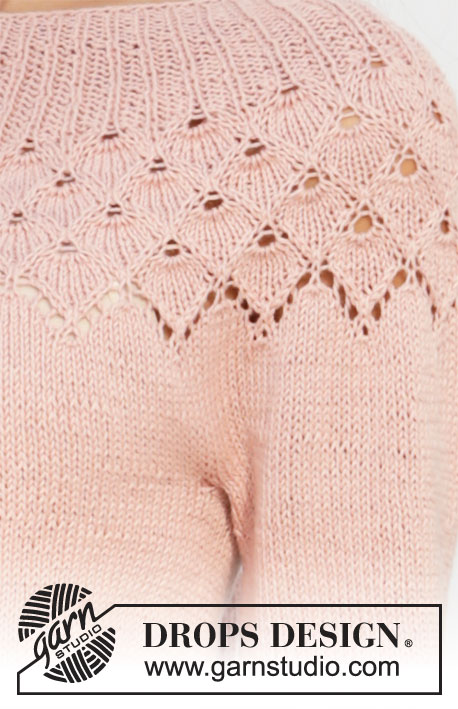
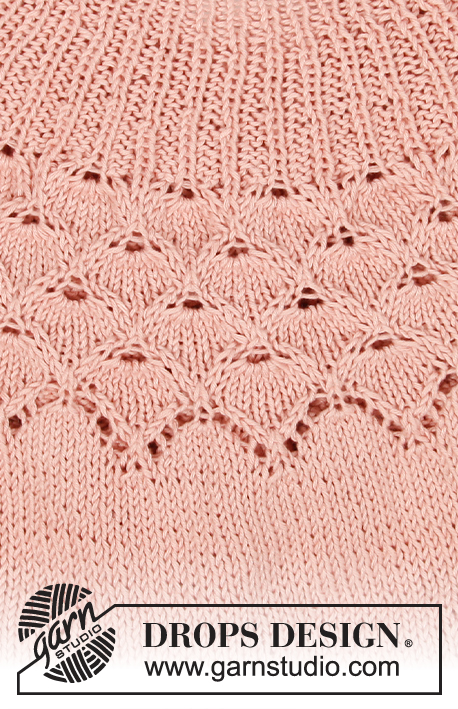

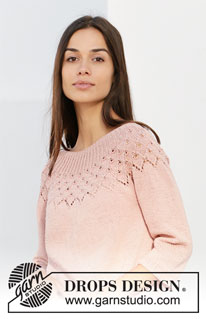
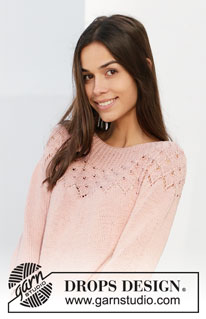
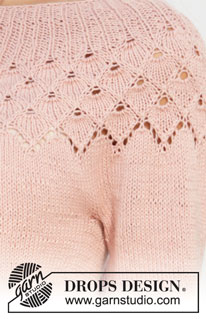






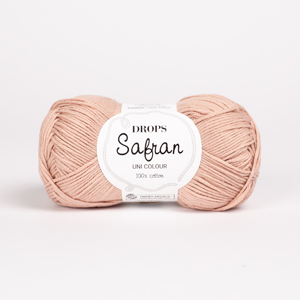
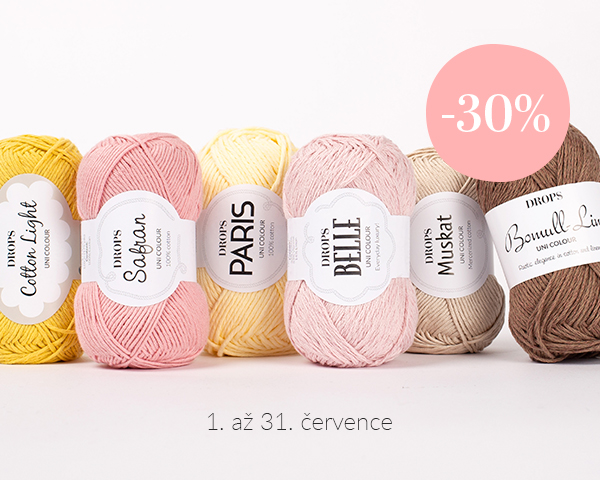
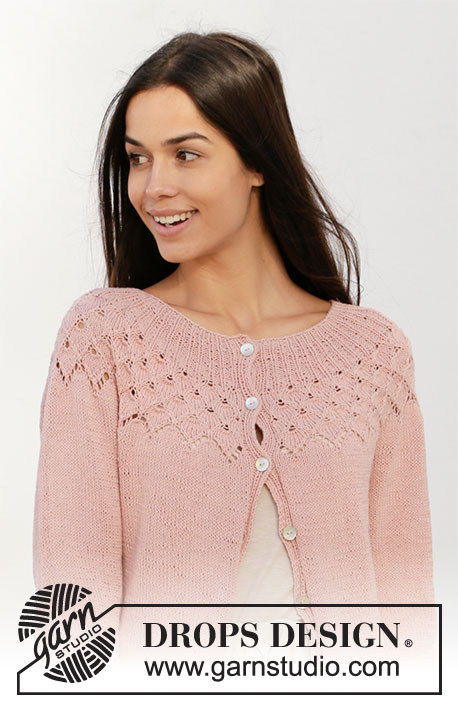













































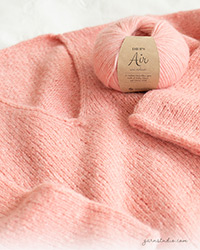


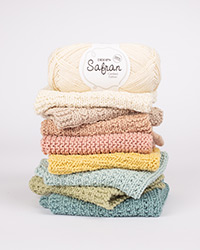
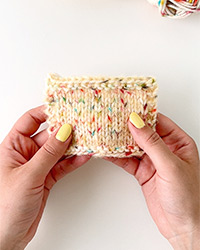
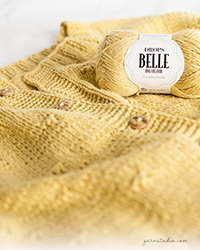
Přidejte komentář k návodu DROPS 212-5
Rádi bychom věděli, co si o tomto modelu myslíte!
Pokud se chcete na něco zeptat, dbejte prosím na to, abyste ve formuláři níže vybrali správnou kategorii - díky tomu se dříve dozvíte, co potřebujete vědět. Povinná pole jsou označena *.